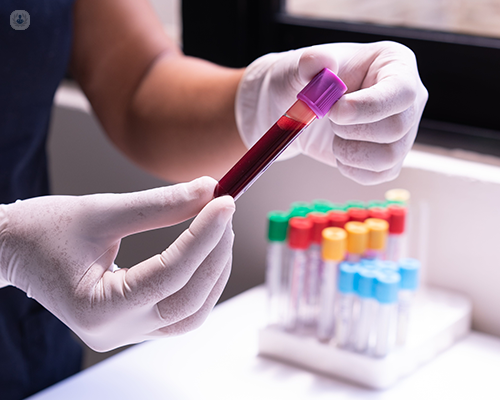Red blood cell count
What is analysed?
Red blood cells, produced in the bone marrow, transport oxygen from the lungs to the rest of the body and bring carbon dioxide back to the lungs for exhalation.
The red blood cell test counts the number of red blood cells in a litre of blood.

What does the result mean?
The result indicates the concentration of red blood cells in the blood.
Why conduct the analysis?
A red blood cell count is conducted to detect any change in the number of red blood cells in the blood.
When to conduct the analysis?
A red blood cell count is conducted as part of a full blood count, which may be requested for a variety of disorders, such as anaemia.
What sample is required?
A blood sample is required.
The blood can be taken by needle, from a vein in the arm, or by a finger-prick. In newborns, the blood can be taken by a heel-prick.
Is any prior preparation necessary?
No special preparation is required.
How is it performed?
The sample is sent to a laboratory, where it is analysed using automated haematology analysers which count the number of red blood cells in the sample and provide measurement of the concentration.
What are the normal values?
| Red blood cell count | Normal range |
|---|---|
| Men | 4.5 to 5.5 million cells/mcL |
| Women | 4.0 to 5.0 million cells/mcL |
What does having altered values mean?
- Low red blood cell count: Indicates anaemia and a deficiency in oxygen-carrying capacity, which can cause symptoms like fatigue.
- High red blood cell count: Indicates polycythaemia and an overproduction of red blood cells, which can lead to an increased risk of clotting.